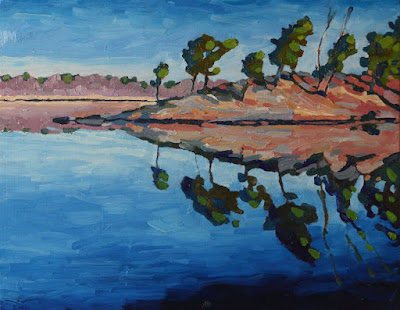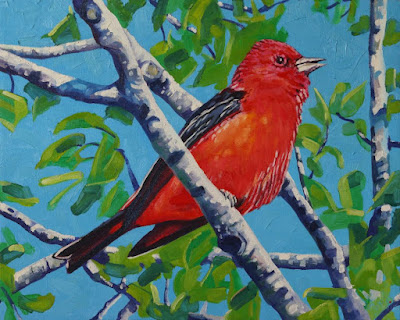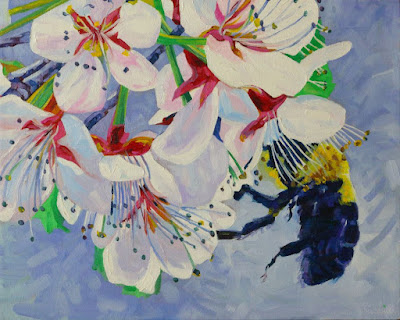 |
| #2957 "Singleton Rocky Point and Sheltered Bay" 18 x 14 by 7/8 depth cradled smooth panel (inches) Started 4:30 pm Monday, June 23rd, 2025 |
"I have always believed that the Canadian Wooden canoe is one of the greatest achievements of mankind." Bill continued: "When a man is part of his canoe, he is part of all that canoes have ever known." Bill was quite right.
My canoe has cherry trim, but the hull is carbon. The carbon layup by Swift Canoes only weighs about 35 pounds, which has become quite important to me. I am not forty years old anymore and never will be again. Being a meteorologist, I convinced my wife that this was my way to permanently sequester carbon out of the atmosphere. I need to purchase a lot more carbon canoes if I really want to combat global warming.
There are a few other canoe sayings that resonate with me, and I wish to share them here with another canoe painting.
- "Love many, trust few, but always paddle your own canoe." -American proverb
- "Everyone must believe in something. I believe I'll go canoeing." -Henry David Thoreau
- "Wherever there is a channel for water, there is a road for the canoe." – Henry David Thoreau
- "There is magic in the feel of a paddle and the movement of a canoe, a magic compounded of distance, adventure, solitude and peace." -Sigurd F. Olson
And finally, my favourite...
- “A day without canoeing probably wouldn’t kill me, but why risk it?” – Author unknown
Bill Mason also correctly claimed: "Anyone who says they like portaging is either a liar or crazy." I have done some long portages, and they were never very much fun, as I recall.
My canoe took me to the same location in April 2025.
Inspiration can be found around every corner if we just look with a curious mind.
‘It’s not what you look at that matters, it’s what you see.’ – Henry David Thoreau
So I stay home, paint and look after the forests while surrounded by nature. Happiness, being useful and having empathy for all of nature and the environment is my simple quest. Life remains good and quite productive.
Warmest regards and keep your paddle in the water,














































